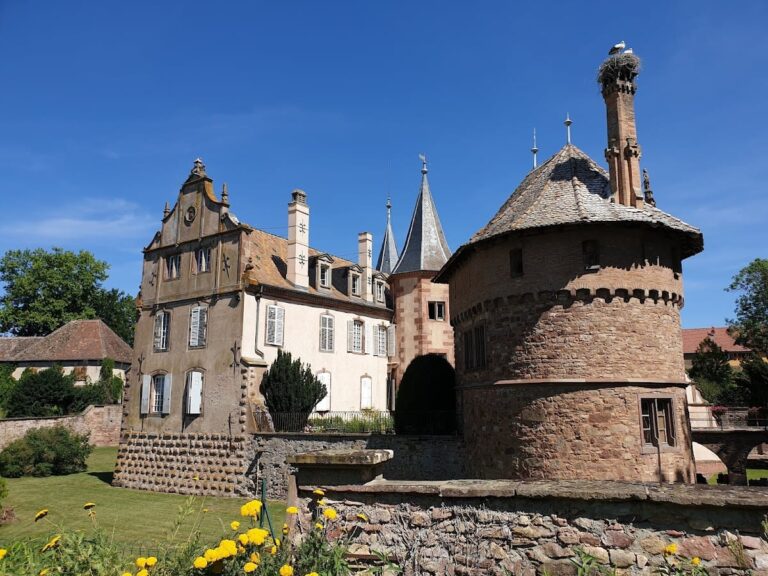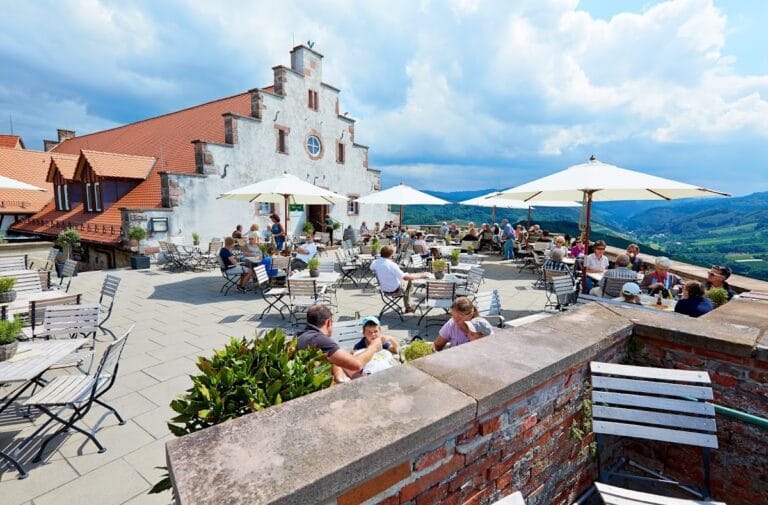Château de l’Île: A Historic Castle in Ostwald, France
Visitor Information
Google Rating: 4.4
Popularity: Medium
Google Maps: View on Google Maps
Official Website: www.chateau-de-lile.com
Country: France
Civilization: Unclassified
Remains: Military
History
The Château de l’Île is located in the municipality of Ostwald in modern-day France. Its origins trace back to medieval times, with the earliest known mention of a castle on the site dating to 1226, indicating that it was originally established during the Middle Ages.
By the early 1600s, a new castle stood in place of the original medieval structure. This 17th-century building incorporated Renaissance architectural features, reflecting the cultural and artistic influences of that period. It is understood that this castle replaced an earlier fortress, though specific details of that earlier construction are not documented.
In 1891, the château underwent a significant transformation under Leónard Heydt, a local entrepreneur who also served as the mayor of Ostwald from 1861 until 1901. Heydt chose to incorporate elements from the 17th-century castle into a new building designed in the Neo-Renaissance style, blending historical and revival architectural elements. During this period, the property was named Schloss Inselburg, adopting the German language reflecting Alsace’s inclusion in the German Empire. The name means “Castle of the Island,” a reference to the château’s position surrounded by a side arm of the river Ill.
Following World War I, in 1918, ownership of the château passed to the Darbois family. Starting in 1921, the building’s function shifted from residence to industry as it was converted into a tea factory. This commercial use continued until the late 1960s, after which the site was left unused and fell into abandonment for over two decades.
In 1991, Pierre Traversac acquired the property and initiated its conversion into a luxury hotel. This project, completed and opened in 1994, included the addition of lateral wings built in the local half-timbered architectural style. This adaptation combined respect for regional heritage with modern usage, reviving the château after its period of neglect.
Remains
The Château de l’Île presently stands on an island formed by a lateral branch of the river Ill, creating a distinctive setting that influenced both its name and layout. The current structure, dating to 1891, integrates surviving components of the earlier 17th-century castle, blending Renaissance design motifs with Neo-Renaissance style in a coherent architectural composition.
Constructed primarily with stone and traditional building materials, the château reflects the continuity of construction across several centuries. Its incorporation of parts from the previous castle suggests that walls or foundational elements were preserved and adapted into the later design rather than completely rebuilt.
Additional wings were later added on either side of the main building during the early 1990s renovation. These extensions were designed using the local half-timbered method, a regional style characterized by wooden framing filled with plaster or brick, harmonizing the historic character of the estate with vernacular Alsatian architectural forms.
No specific inscriptions, decorative mosaics, or archaeological artifacts have been detailed, but the existing structure showcases a layered history through its architecture. The château remains in good condition, having undergone restoration and adaptation to maintain its historical identity while accommodating new functions.










